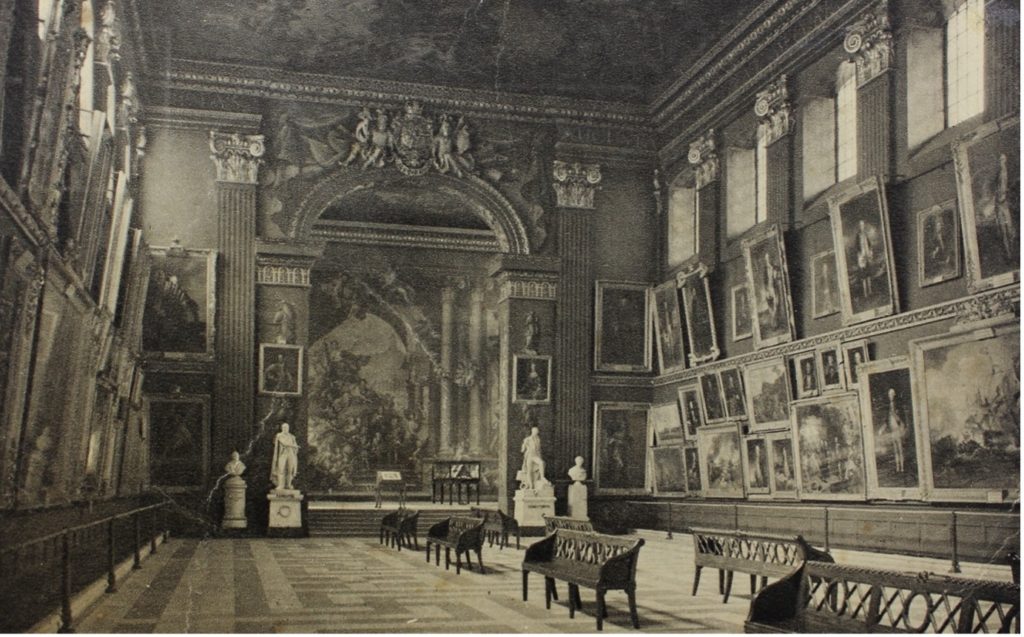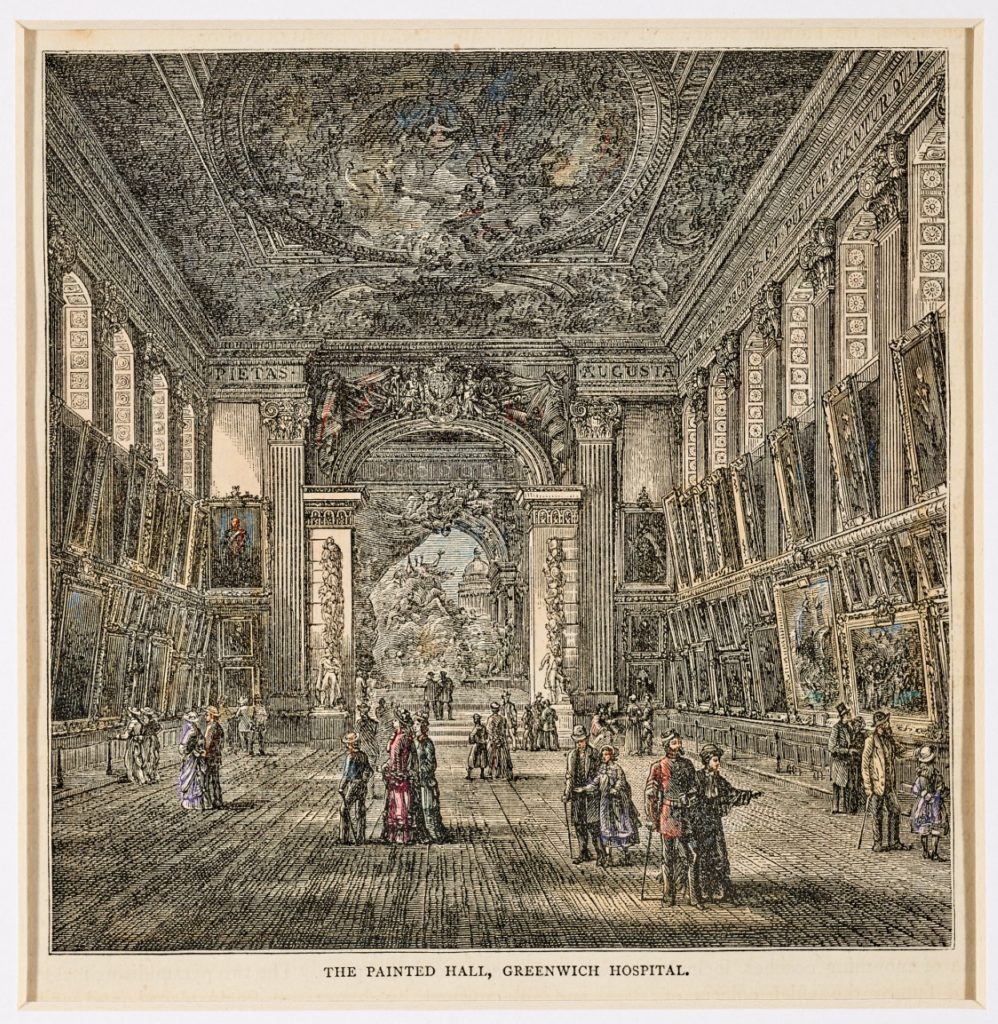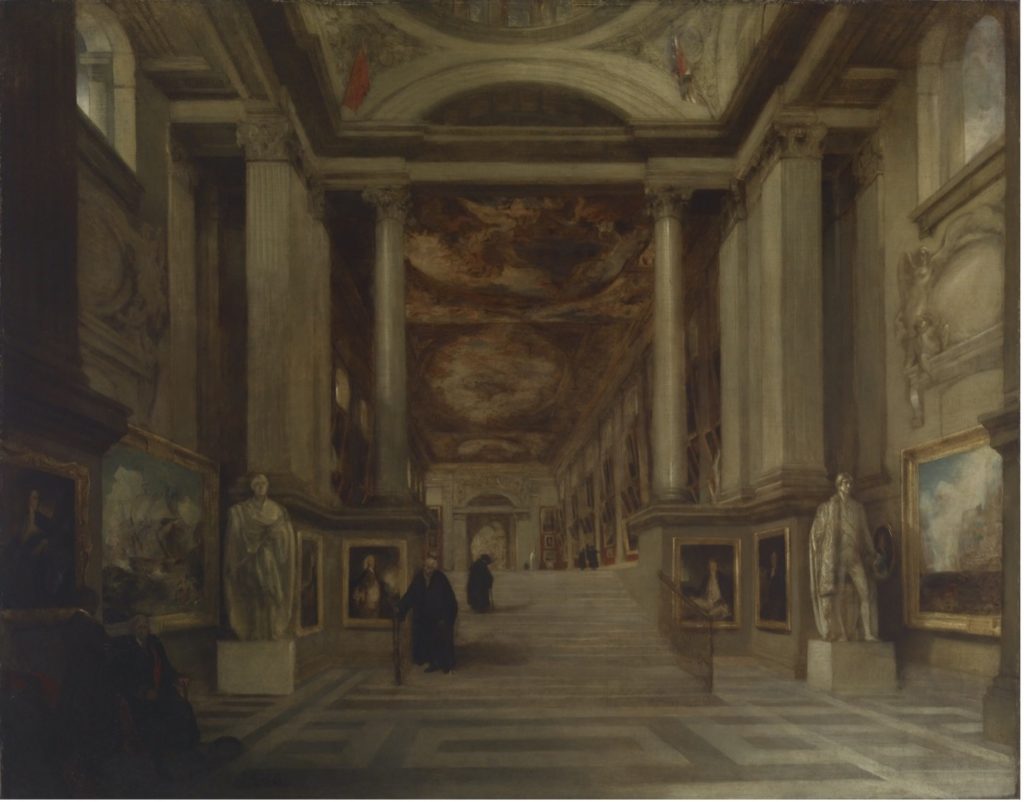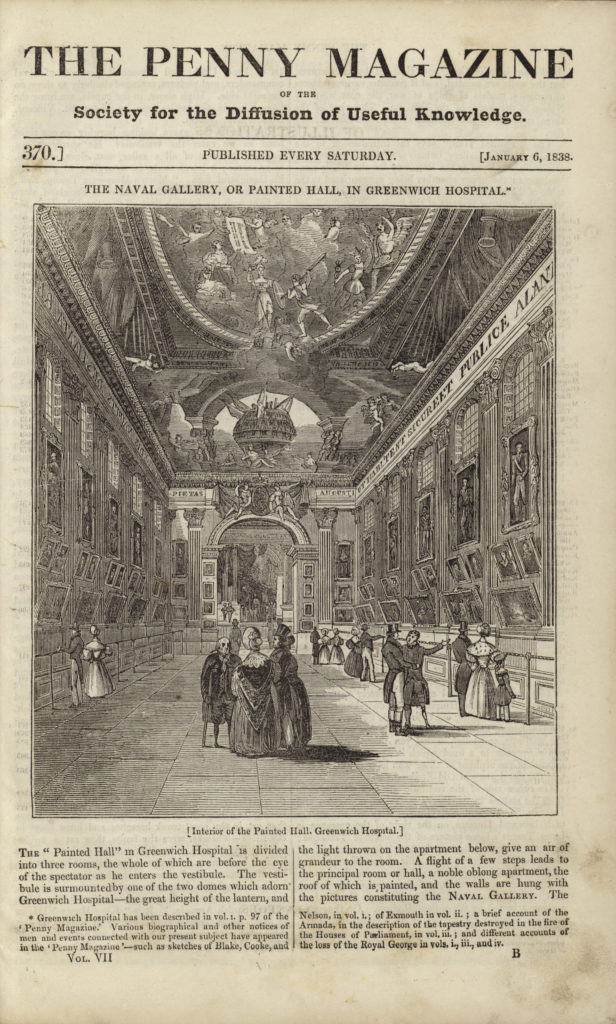A Naval Art Gallery That Is No More
Thu 23 Feb 23
Did you know that the Painted Hall once housed one of the earliest public art galleries in Britain?
Seeing someone walk into the Painted Hall for the first time is quite a joy. The colours and details on the ceiling are so arresting that few can contain their enthusiasm. However, back in the 19th century, the hall looked entirely different, and surprisingly, the ceiling was not even the main draw. The walls were covered with a wide collection of naval paintings, and the hall hosted various statues and naval artefacts.

The National Gallery of Naval Art, which opened its doors in 1824 (a few months before the National Gallery in Trafalgar Square), was conceived by William Locker, an officer in the Royal Navy. However, William died in 1800 and it would be up to his son Edward Hawke Locker to rekindle his father’s plans and bring them to fruition.
William Locker was born in 1731 and joined the Royal Navy at the age of 15. In 1768 he was promoted to captain and in 1777 he took command of HMS Lowestoffe, sailing to the West Indies with Horatio Nelson. They remained lifelong friends, with Nelson affectionately referring to Locker as his ‘Sea-Daddy’. In 1793 William Locker was appointed Lieutenant-Governor of the Royal Hospital for Seamen, Greenwich, a position that he held until his death in 1800.
The First Proposal
Two years after William Locker’s appointment, he submitted a plan to the Hospital’s Board of Directors. His proposal was a gallery of naval paintings in the Painted Hall to ‘perpetuate the memory of brave officers’. Locker was firm in his belief that the Greenwich Hospital was the perfect place to house these paintings, as it complemented the wealth of maritime symbolism already present in the Painted Hall.
Unfortunately for William Locker, his proposal was not implemented during his lifetime. We do not know why the plan was shelved but it is suggested that the issue lay with the timing, not the proposal itself. Europe was in the early stages of the French Revolutionary Wars (1792-1802); and increasing numbers of injured seamen were putting pressure on the Hospital’s resources. Additionally, a major commemorative project was already underway in St Paul’s Cathedral, which took priority over Locker’s idea.
The Second Proposal
However, the story does not end there. On 20 September 1823, William Locker’s youngest son, Edward Hawke Locker, who was Secretary at Greenwich Hospital, submitted another proposal for the creation of a gallery in the Painted Hall.
In contrast to his father’s active naval career, Edward had pursued a civil path within naval administration since the age of 17. In addition to his professional role, Locker was a man of varied talents and accomplishments: a fellow of the Royal Society, a watercolourist, a writer and editor, and a charming conversationalist. Edward Locker’s proposal to create a naval gallery was closely tied to his interest in popular education. He wanted to create a space that would be widely accessible and informative to the general public whilst also inspiring the next generation of sailors.

The Paintings
Early in 1824, the Naval Gallery received a total of 39 paintings from the Royal Collection donated by George IV. Some were replicas as the King wasn’t always willing to give up the originals. This unintentionally created a precedent for private donors, and the gallery was slowly populated with paintings depicting naval battles and portraits of British admirals and commanders. There were also some Spanish and Portuguese explorers such as Christopher Columbus and Vasco de Gamma, and several paintings by Dutch painter Peter Lely, who was a portrait artist to Charles I.
Interestingly, there was even a portrait of John Worley, who was one of the first pensioners to be admitted to the Royal Hospital for Seamen and who can also be found in the ceiling. But most notably J.M.W Turner’s The Battle of Trafalgar (1822-1824) could be found on the north wall of the vestibule.
Where did the windows go?
One of the most beautiful sights in the Painted Hall is to see the light change throughout the day, entering through the high windows. However, to hang the paintings, these stunning windows had to be blocked. To do so, Edward proposed the construction of side walls and a system of iron rods to hang the frames. These were painted in a uniform colour to ensure consistency. Moreover, all pictures were framed in gold to create a sense of cohesion.

The Opening of the Gallery

The gallery officially opened to the public in the spring of 1824. In 1832, Locker claimed that more than 50,000 people a year had visited the gallery. By 1840, after the opening of the London and Greenwich Railway, the annual visitor figure was 100,000. Greenwich Pensioners were paid to invigilate the gallery, and they also gave guided tours (not too dissimilar to our tour guides now).
Where did the paintings go?
Even though the Royal Hospital for Seamen was closed in 1869, the Gallery remained open until 1936, and most artworks were transferred to the newly founded National Maritime Museum in Greenwich Park. Currently, some of these artworks are on display in the Museum galleries and in the Queen’s House, and others are held in storage. The Painted Hall underwent restoration in preparation for becoming a dining room for naval officers at the Royal Naval College. The busts of Horatio Nelson and James Goodenough that were once in the gallery can still be found at the foot of the stairs in the Visitor Centre.
Still to be found in the Painted Hall are the naval benches that once accommodated visitors to the National Gallery of Naval Art. In 2019, they were refurbished and returned to their original home as part of the Painted Hall conservation project. So next time you come to the Painted Hall, make sure you take a good look at the bench backs, as they are beautifully carved with a rope motif, and some have traces of the Hospital’s crest painted on the side panels!
Written by Luisa De la Concha Montes, adapted from an investigation by Jesenice Visintin.
Sources
‘Edward Hawke Locker and the Foundation of the National Gallery of Naval Art (c. 1795-1845)’, Dr Cicely Robinson, University of York, 2013.


